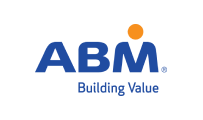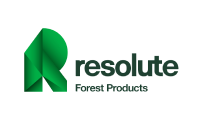Introduction to European ESG Training
European companies are moving fast on sustainability. New regulations, investor pressure, and supply-chain risks are reshaping how business works. ESG skills are core to strategy, performance, and risk management.
This blog explains why European ESG training matters now. We use the lens of climate risks to global supply chains. Extreme weather is hitting production, logistics, and energy systems. The result is higher costs, tighter timelines, and new compliance duties. A structured program helps you respond with confidence—using standards, data, and proven tools.
CSE’s Europe Sustainability & ESG Course is built for this moment. It translates complex risks into practical action. It also helps you stand out in a crowded market.
Benefits of Sustainability ESG Training
- Understand climate risk in business terms. Learn how floods, droughts, and heatwaves affect manufacturing, agriculture, logistics, and trade routes. Link these impacts to financial materiality, KPIs, and board-level decisions.
- Master leading frameworks. Align with ESRS/CSRD, GRI, TCFD/ISSB, and supply-chain due diligence rules. Turn requirements into workflows.
- Build resilient supply chains. Map hotspots, assess suppliers, set targets, and design mitigation plans that reduce cost and downtime.
- Improve reporting quality. Produce clear, decision-useful disclosures backed by evidence and internal controls.
- Boost career value. Add a recognized certificate, practical casework, and a network of peers and mentors across Europe.
- Accelerate action. Move from policy to implementation with templates, checklists, and real examples.
Practical Steps, Tools, and Best Practices
- Map your supply chain. Identify tier-1 and critical tier-2 suppliers. Note locations, hazards, and single-point-of-failure risks.
- Prioritize risks. Score hazards like flood, heat, drought, and wildfire against exposure and vulnerability. Focus on top 20% of SKUs or inputs.
- Quantify impacts. Connect risk to downtime, cost, quality, and emissions. Build the business case for action.
- Embed standards. Align your double materiality, Scope 3 screening, and risk registers with ESRS and GRI.
- Design mitigations. Diversify suppliers, add buffer inventory for critical parts, adopt reclaimed water or energy backup, and improve logistics options.
- Tighten governance. Define roles, decision gates, and escalation paths. Link incentives to resilience and emissions goals.
- Report and improve. Publish clear metrics, targets, and progress. Use audit-ready evidence and supplier engagement plans.
Common Mistakes to Avoid
- Treating climate risk as an “ESG report” task. It is an operations and finance issue first—then a disclosure.
- Relying on single suppliers in risk-prone regions. Diversify sources and transport routes before crisis strikes.
- Ignoring slow-onset risks. Water stress and heat reduce output long before disasters appear.
- Underusing data. Combine hazard maps, supplier locations, and cost models to guide decisions.
Real-World Applications
The evidence is clear: extreme weather is more frequent and intense. Local shocks travel fast across borders through trade and global supply chains. Consider three exposure points:
- Manufacturing: Floods can halt component production and ripple across automotive and electronics value chains.
- Agriculture: Droughts and heatwaves cut yields and raise prices for crops like rice, cocoa, and coffee, affecting food and FMCG sectors.
- Logistics and energy: Low river levels and canal constraints slow freight and cut hydropower output, increasing transport and energy costs.
Diversified sourcing, flexible logistics, and water-efficient processes limit disruption. Policy also matters: uncoordinated export restrictions can amplify shocks. For broader context and research, see Bruegel’s work on climate risks to supply chains and IPCC summaries. The CSE course turns these trends into playbooks you can apply.
FAQs
What is European ESG training in simple terms?
It’s a practical program that teaches how to integrate sustainability into strategy, operations, and reporting in line with European rules and investor expectations. You learn frameworks, risk methods, and hands-on tools to deliver real business results.
How long does it take to learn and get certified?
CSE’s Europe cohort is concise and intensive. You complete live expert sessions plus a practical assignment. Most participants finish within a short timeframe. Exact dates and hours are on the course page.
Is ESG training worth it for career growth?
Yes. Employers need talent that can manage climate and supply-chain risks, meet ESRS/CSRD demands, and improve performance. Certification signals credibility, practical skills, and readiness to lead.
Ready to turn climate risk into resilient performance—and accelerate your ESG career?
Join our Europe Certified Sustainability (ESG) Practitioner Program by CSE. Gain practical tools, a recognized certification, and expert guidance tailored to European requirements.
👉 Register here for the Europe cohort







